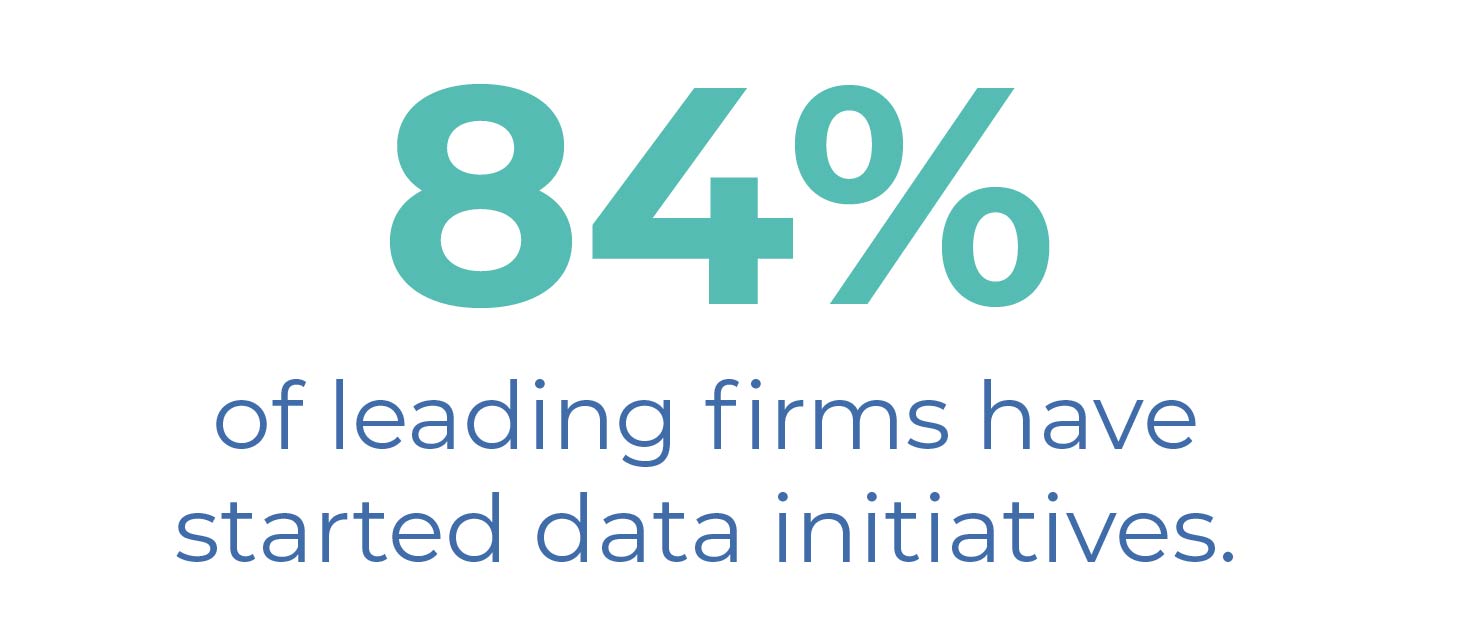The importance of RFP data and analytics
“Big data analytics enables firms to strengthen their business operations, for example, in supply chain management and customer relationship management. In customer relationship management, the emergence of big data analytics will enable a new wave of strategies to support the personalization and customization of sales and customer services, and to build stronger and more personal relationships with customers.”

What is RFP data?
Basic data to capture from an RFP
-
Customer industry
-
Customer location or region
-
Dates (RFP issue date, response due, decision date)
-
Contact name
-
Contact role
-
Customer needs
-
RFP value (estimate if needed)
-
RFP status
-
Won/lost reason
RFP process data to capture
-
Time to complete the RFP
-
Subject matter experts (SMEs) and stakeholders involved
-
Answers used from knowledge library
-
New answers created
3 valuable ways to use RFP analytics
So, once you collect all of this data, what can it become? That’s the exciting part — the possibilities are endless.
1. Sales optimization with RFP insights
When it comes to sales, knowledge is key to winning. One of the most common questions that vendors and suppliers have to answer is what do customers want? Well, the answers are all right there in the data. Analyzing the data can reveal winning proposal strategies, opportunities to optimize win rate and more.
Effective proposal strategies and pricing
RFP data uncovers winning strategies. As you gather proposal data, group winning proposals together. What do they have in common? For instance, does one proposal coordinator use an executive summary template that wins more often? Or, are you most likely to win RFPs from the construction industry in the third quarter?
Once you’ve identified the trend in the data, look for other influencing factors. Remember, understanding the reason behind the trend is as important as identifying it to begin with. Research and explore any additional factors before you act on RFP predictive analytics.
Negotiation and contracting insights
Is your proposal pricing effective? Do your proposals and the resulting contracts match? Check the data! Tracking the proposed and final contracted values of an RFP may reveal unexpected changes. By accounting for common adjustments to the initial proposal, the time from proposal to contract can be reduced, accelerating your sales cycle.
Better bid/no-bid decisions
Making the most of your time means not answering every RFP that comes your way. RFP analytics should be a part of your decision to bid or not to bid. As you prepare for go/no-go discussions use RFP data to ensure you’re only spending your time on business that you’re most likely to win.
Download a handy bid or no-bid checklist here.
2. Strategic planning with RFP analytics
Beyond identifying specific sales trends, RFP analytics can uncover larger trends that impact your business. Big-picture insights can help your business adapt to changing market demands and prepare for future success.
Selection trends
Every company has a number of different criteria for their vendors. Consequently, selection trends constantly evolve. For example, we’ve seen recent trends in RFPs that indicate that social responsibility is increasingly important to organizations. From sustainability to diversity, companies favor businesses that share their values. Raising this trend to the leadership team, may prompt exploration on how to enhance or formalize policies and efforts in these areas.
Seasonality
Most businesses have some seasonality, and so do RFPs. For example, we see an influx of IT RFPs in the fourth quarter of the year as budgets for the next year are finalized. Tracking which industries undertake procurement projects at what time of year can help you plan and prepare. You’ve likely always known it, and now you’ll have the data to prove it.
Timing and resource allocation
Along with seasonality, you’ll be able to predict proposal timelines and resource requirements more accurately. With this knowledge, you can precisely time your capture management plans, prepare your SMEs and proactively hire a proposal development consultant if needed.
3. Proposal data as a key performance indicator (KPI)
Unfortunately, proposal teams are often undervalued within their businesses. The lack of recognition may be caused, in part, by an absence of data. Proposal data can empower your team to bring visibility to the importance of their work.
Proposal team efficiency
As your proposal team matures, the RFP response process becomes more efficient. However, if you’re not measuring the data associated with your process, it’s hard to justify investing in additional tools like proposal software. By tracking the hours required to respond to an RFP, you can begin to estimate the cost per proposal. With this information, as well as a return on investment estimate and business case, you’re more likely to win buy-in for RFP software.
Measuring KPIs with RFP data is a continuous process. As you optimize your approach and embrace RFP automation, your team can respond to more RFPs. The increase in opportunities should lead to an increase in business and brand awareness. Not to mention, the value of the additional RFP data will give you even more insights.
Proposal effectiveness
Responding to more RFPs alone won’t grow your business. The proposals have to hit the mark. As you accumulate insights you can refine your message and customize for each customer. Better proposals, in conjunction with a well-informed bid/no-bid process, can significantly improve chances for success. Indeed, measuring your win rate is crucial to publicizing your value as a team.
At the end of the day, all of these insights are valuable. They can lead to more lucrative deals, optimized partnerships, faster RFPs and reduced costs, just to name a few benefits.
Barriers to capitalizing on RFP data
These days, it’s no secret that big data is a big deal. Indeed, most companies use enterprise resource planning (ERP) and customer relationship management (CRM) software systems to capture and analyze data. Empowered with that insight, the business makes more informed, data-based decisions. Why, then, given the importance of RFPs to business growth, is the adoption of RFP analytics and RFP software such a low priority?
Roadblocks to RFP insights
Lack of investment in digital transformation
Admittedly, without the benefit of technology, gathering and analyzing data is difficult. While it is possible to manually capture data, RFP software makes it much easier. Most platforms, like RFP360, have dashboards and reporting built in. However, even without an RFP management system, you can begin collecting data now using Excel or Google Sheets.
As more and more procurement teams invest in RFP software, proposal teams will follow. When they do, the power of AI and machine learning will make their RFP data even more valuable.
Size of the data sets
RFPs are packed with valuable data. But, for the most part, only a small amount of surface-level data and information is explored. As illustrated above, the insights that could be uncovered, simply by analyzing data are impressive. However, getting started can feel overwhelming, but it doesn’t have to be.
To get started with RFP analytics, you must have enough data to ensure that you’re not drawing conclusions based on outliers. That means using both current and historical RFPs to draw data from. While incorporating past RFPs into your data will be time consuming if done manually, it will ensure you make decisions on solid data.
Lack of transparency between buyers and sellers
Imagine how much more powerful your proposal data would be if you had more information about how the buyer scored your proposal. Likewise, if you knew the evaluation criteria and weights, that information would improve your response strategy. As data becomes more important to both proposal and procurement teams, how we communicate must become more transparent. In fact, the future of RFPs depends on it.
Explore what the experts have to say about the future of RFPs in this ebook.
When RFP data is consistently tracked, it can then be further leveraged along with data from your ERP and CRM systems for even deeper analysis. Truly, the insights available are endless. And, as the volume of your data builds, it becomes more valuable and accurate. So, if you’re interested in RFP data, the best advice I can offer is to start now. Don’t wait.



